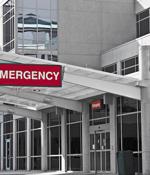Security News

In the last two years, COVID-19 has occupied healthcare providers' minds - rightfully so, considering the pandemic's tremendous toll on patients. Healthcare leaders, physicians, and other care providers need to look at cybersecurity risks through a new lens - patient health and safety.

The report shows that 99% of those healthcare organizations hit by ransomware got at least some their data back after cybercriminals encrypted it during the attacks. Additional ransomware findings for the healthcare sector Healthcare organizations had the second-highest average ransomware recovery costs with $1.85 million, taking one week on average to recover from an attack.

Sophisticated cyberattacks are crippling healthcare providers by posing a threat to core functions and patient privacy, according to Software Advice survey. Findings reveal that 22% of small practices and 45% of large practices have experienced a ransomware attack at some point, with numbers rising in the past three years.

Healthcare organizations, already an attractive target for ransomware given the highly sensitive data they hold, saw such attacks almost double between 2020 and 2021, according to a survey released this week by Sophos. "The proportion of healthcare organizations directly impacted by ransomware has almost doubled in 12 months. In the face of this near-normalization, healthcare organizations have gotten better at dealing with the aftermath of an attack: virtually everyone now gets some encrypted data back and nearly three quarters are able to use backups to restore data."

The medical internet of things market is expected to reach $158 billion in valuation in 2022, up from its 2017 value of $41 billion. As healthcare facilities continue to add IoT devices, this article discusses the necessity of Wi-Fi 6 for providing contextual health data to improve patient outcomes in modern healthcare facilities.

Drafted by the Health Information Management Working Group, the report provides best practices that healthcare delivery organizations can use to manage the cybersecurity risks associated with their supply chains. HDOs face risks from many different types of supply chain vendors, everything from food suppliers, software providers, medical devices, pharmaceuticals, and day-to-day medical supplies.

The relationship between medical device manufacturers and healthcare delivery organizations has always been challenged by a lack of good communication, mostly to the detriment of the latter. The impact of a cyberattack is not equally shared: While a HDO may be rendered inoperable for days or weeks by ransomware, the MDM may or may not be receiving some bad press.

A majority of healthcare leaders have established digital transformation as a top priority spurred by the pandemic, yet they're facing a chronic, underlying challenge that's impeding their efforts: data readiness. As a result, the number of healthcare executives planning to invest in technologies designed to improve data readiness and support systemic interoperability is projected to jump 440% by 2025- the highest percentage of increased investment compared to other healthcare IT categories.

Healthcare industry still lagging in multicloud adoption. Despite multicloud becoming the dominant IT architecture worldwide, nearly one-in-three respondents in the industry say private cloud is still their model of choice.

Amid the COVID-19 crisis, the global market for healthcare IT estimated at $276.8 billion in the year 2022, is projected to reach a revised size of $484 billion by 2026, growing at a CAGR of 15.1% over the analysis period, according to Global Industry Analysts. Increasing government support for healthcare IT in the form of stimulus packages and initiatives such as ARRA; introduction of healthcare reforms such as ICD-10, and ACOs; government policies aimed at lowering healthcare costs such as PPACA; and increasing automation of healthcare organizations are all favoring growth in the healthcare IT market.